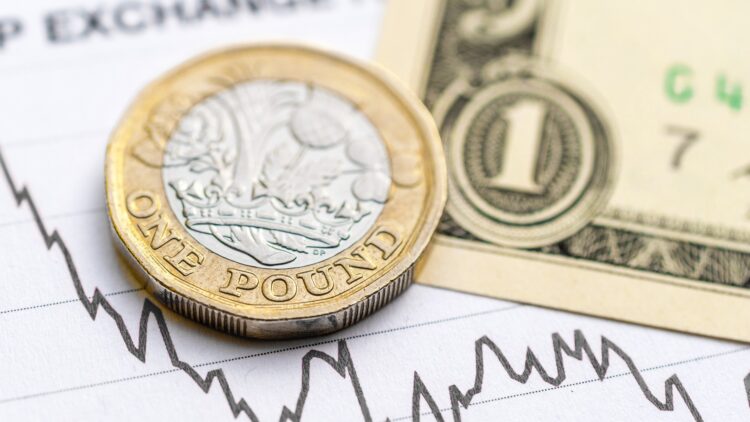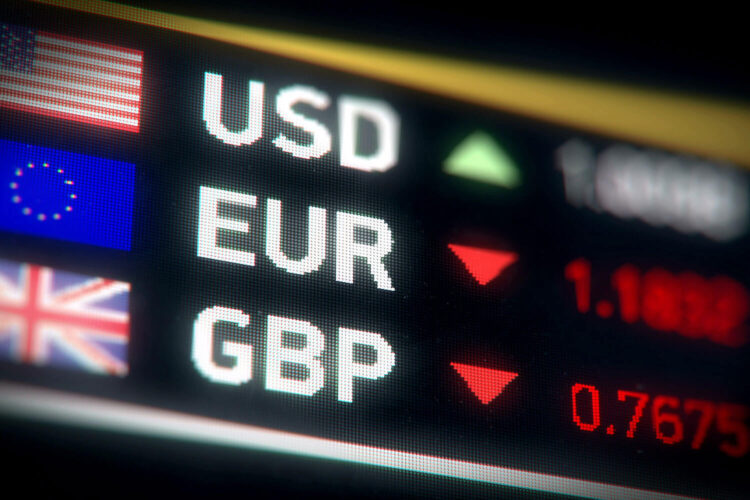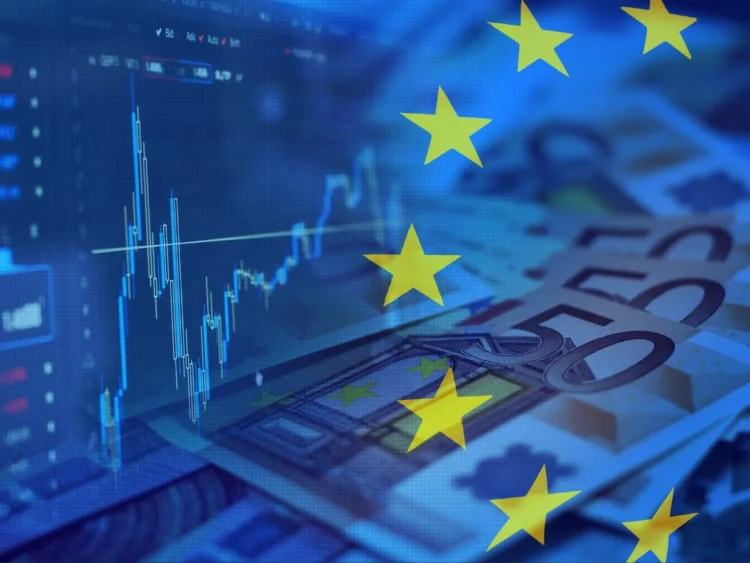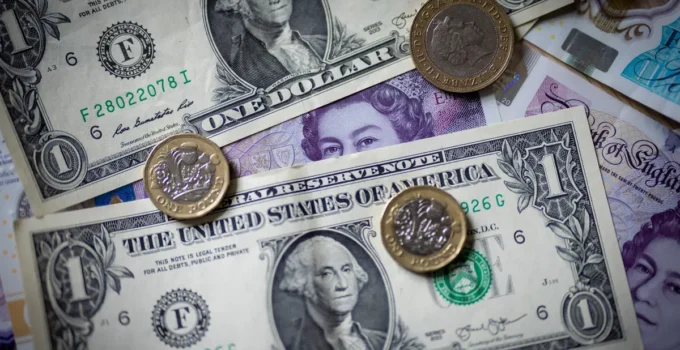The GBP/USD currency pair, commonly known as “Cable,” represents the exchange rate between the British Pound and the U.S. Dollar. It is one of the most traded currency pairs in the world, signifying the interconnectedness of the UK and the US economies. This article aims to dissect whether the GBP is gaining strength against the USD by delving into a myriad of factors that influence their exchange rate. Through an analytical lens, we will explore economic indicators, monetary policies, and global events to provide a comprehensive evaluation of the current and future positions of GBP/USD.
Page Contents
Historical Context of GBP/USD Exchange Rate

Source: blog.roboforex.com
Historically, the GBP USD exchange rate has been subject to fluctuations driven by geopolitical events, economic policies, and shifts in global financial markets. Significant events, such as the 2008 financial crisis and the 2016 Brexit referendum, have had profound impacts on the exchange rate. Comparing the past to the present exchange rates, one can observe periods of volatility as well as stability, underscoring the dynamic nature of the forex market. This historical perspective lays the groundwork for understanding the current trends and forecasting future movements of the GBP/USD currency pair.
Factors Influencing GBP/USD Movements
Currency values are influenced by a complex web of factors, including economic indicators, political stability, interest rates, and geopolitical events. For the GBP/USD pair, recent factors include the UK’s handling of Brexit negotiations and its economic recovery post-pandemic, as well as the US’s fiscal policies and political climate. The interplay of these factors can either fortify or weaken a currency, affecting the GBP/USD exchange rate. Understanding these influences is crucial for predicting the direction of the currency pair.
Recent Economic Indicators in the UK

Source: iexpats.com
The UK’s recent economic indicators have shown a mixed bag of results. GDP growth has been positive but slow, reflecting the gradual recovery from the pandemic’s impacts. Unemployment rates have decreased, indicating a recovering labor market. However, inflation rates have surged, raising concerns about the cost of living and purchasing power. These indicators suggest a cautious optimism about the strength of the GBP, as the economy shows signs of resilience amid challenges.
Recent Economic Indicators in the US
In contrast, the US economy has exhibited robust growth, with significant improvements in GDP and a steady decline in unemployment rates. However, like the UK, inflation remains a concern, potentially prompting policy responses from the Federal Reserve. These economic indicators play a pivotal role in the USD’s strength, influencing the GBP/USD exchange rate through shifts in investor sentiment and monetary policy adjustments.
Monetary Policies: Bank of England vs. Federal Reserve
The monetary policies of the Bank of England and the Federal Reserve have a direct impact on the GBP/USD exchange rate. Recently, both have navigated the challenges of post-pandemic recovery, with policies focused on stimulating economic growth while trying to keep inflation in check. The Bank of England’s approach to interest rates and quantitative easing measures directly contrasts with the Federal Reserve’s tactics, influencing the relative strength of the GBP and USD.
Brexit and Its Impact on GBP/USD

Source: worldfirst.com
Brexit has been a critical factor affecting the GBP’s volatility. The uncertainty surrounding the UK’s exit from the EU and subsequent trade negotiations led to significant GBP fluctuations. Although a trade deal was eventually agreed upon, the long-term economic impacts of Brexit on the GBP remain a topic of extensive analysis. The GBP’s future strength against the USD will significantly depend on how Brexit’s economic consequences unfold over time.
Technical Analysis of GBP/USD
Technical analysis involves examining historical price movements and trading volumes to forecast future currency movements. By employing key indicators, such as moving averages, support and resistance levels, and trend lines, analysts can scrutinize the GBP/USD pair in depth. The current technical analysis underscores that opportunities for short-term gains exist, yet traders should remain cautious. The underlying volatility and geopolitical risks, including trade negotiations and policy changes in both the UK and US, could unpredictably sway the pair’s direction. Such analysis is pivotal for identifying potential entry and exit points, guiding traders in their decision-making process.
Expert Opinions and Predictions
Financial analysts and experts offer varied opinions on the future of GBP/USD, mirroring the uncertainty and complexity inherent in forex markets. A segment maintains a bullish outlook on the GBP, attributing this to the UK’s resilient economy, successful vaccination rollout, and adaptive financial policies. Conversely, others adopt a more bearish stance, focusing on the long-term economic challenges post-Brexit and potential shifts in US fiscal policy that could impact interest rates. These expert analyses, while offering valuable insights, also underscore the speculative and risk-laden nature of currency trading, advising investors to approach with caution and informed judgment.
Impact of Global Events on GBP/USD

Source: exchangerates.org.uk
Global events, spanning pandemics, wars, and international trade agreements, wield immediate and profound effects on currency pairs. The COVID-19 pandemic serves as a stark illustration, triggering unprecedented volatility in the GBP/USD exchange rate due to the differential impacts on the economies of the UK and US. Further complicating this are the geopolitical tensions and trade disputes that can swiftly alter investor sentiment and currency strength. Understanding these dynamics is crucial for forecasting the GBP/USD pair’s future direction, offering traders insights into potential market shifts and enabling more strategic trading decisions in a fluctuating global landscape.
Strategies for Trading GBP/USD
For forex traders interested in the GBP/USD pair, understanding the underlying economic, political, and technical factors is crucial. Implementing risk management strategies, such as stop-loss orders and diversifying across currency pairs, can help mitigate losses. Traders should use the analysis presented in this article to inform their trading decisions, keeping abreast of global events and economic indicators that could influence the GBP/USD exchange rate.
Conclusion and Future Outlook
In conclusion, whether the GBP is getting stronger against the USD depends on a complex interplay of economic indicators, monetary policies, and global events. The analysis suggests cautious optimism for the GBP, supported by the UK’s economic recovery and the potential for favorable Brexit outcomes. However, traders and investors must remain vigilant, considering the inherent volatility and unpredictability of the forex market. The future outlook for GBP/USD will continue to evolve, influenced by ongoing economic developments and geopolitical dynamics.





